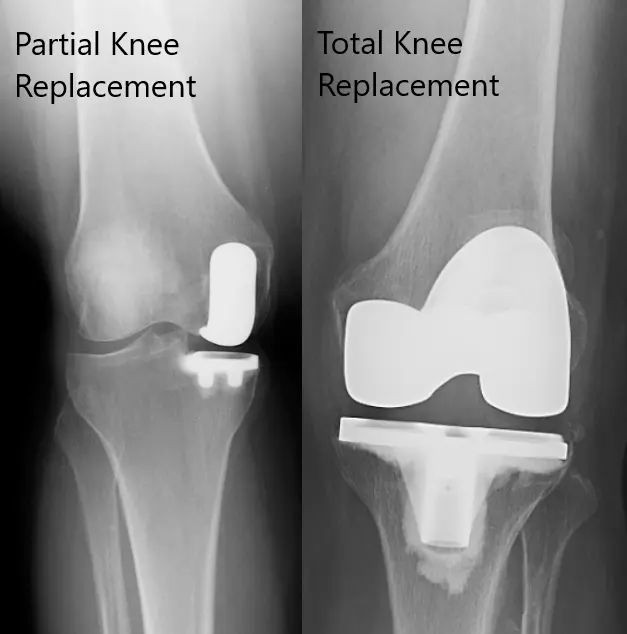
What Is the Best Age to Have Knee Replacement?
What Is the Best Age to Have Knee Replacement?
While knee replacements are commonly performed on people aged 50 to 80, there isn’t a specific age for the surgery.
The majority of knee replacements are performed on people aged 50 to 80, but there is no age or weight limit. The decision is based on the individual’s level of discomfort and handicap.
There isn’t a specific age for knee replacement. However, most people with knee replacement are over 60 because artificial joints typically last only 15 to 20 years.
- The earlier you undergo knee replacement, the more likely you will need additional surgery in the future.
- If the treatment is performed on a younger person, the joint will most likely require a replacement in the future.
The surgeon will recommend joint replacement in cases such as:
- Severe pain that causes considerable handicap and affects overall health
- Disability caused by rheumatoid arthritis at a young age
- Knee joint damage due to a car accident
Knee replacement has been performed on people as young as 20. Most surgeons advise waiting as long as possible, but the goal is to eliminate knee discomfort and restore mobility. Painless mobility is the objective because immobility can be harmful.
- Some people can safely postpone the surgery until they are 60 years old.
- Waiting too long for knee replacement may not be advisable for some individuals.
- For example, if the knee joint deteriorates too much, the surgery to replace it may become more difficult.
However, there is evidence that earlier intervention, before the knee becomes stiff or misshapen, may improve surgical outcomes.
Your surgeon will provide advice on surgical choices available to you, considering your age, health, and level of activity.
Factors that determine the need for knee replacement:
An orthopedic surgeon will determine if a person is a good candidate for knee replacement by considering their medical history, level of knee discomfort, capacity to function, and the results of physical exams, X-rays, and sometimes additional tests.
- X-ray scan severity:
- An X-ray scan should establish the diagnosis of knee osteoarthritis, but there are cases where mild to moderate osteoarthritis on the scan is accompanied by severe symptoms.
- In cases where severe alterations on an X-ray scan are linked with minor symptoms, using it to predict clinical deterioration is risky.
- Walking tolerance is more important than X-ray severity in determining knee replacement.
6 factors that make you a good candidate for knee replacement:
Various alternative therapies are usually tried first, such as anti-inflammatory drugs, injections, and physical therapy. If these options don’t provide relief, it may be time to consider total knee replacement.
- Interference with daily life due to arthritis: Severe pain that interferes with daily activities indicates the need for surgery. Difficulties can include walking, climbing stairs, and sitting or standing up. The use of a cane or walker may also indicate the need for surgery. Even moderate pain at rest or during the night is an indication for knee replacement.
- Persistent pain that doesn’t improve: Knee replacement should be considered if pain persists despite exercise, physical therapy, and medication. In 90 to 95 percent of young people, knee replacement alleviates pain.
- Knee structural abnormalities: Surgery may be an option if the knee is swollen and stiff or bends inward or outward. Total knee replacement removes damaged joint parts and inflammatory tissue, replacing them with an artificial joint. This prosthetic joint can correct any bowing in the leg.
- Knee injury: Surgery may be an option if limb deformities are a result of injury or a congenital condition. Knee replacement can repair damaged knee joints and restore normal function.
- Desire to stay physically active: Artificial knee joints last 15 to 25 years. If knee pain makes activities like jogging, skiing, or hiking difficult, knee replacement may be an option.
- Desire for long-lasting relief: Artificial knee joints can function well for 9 out of 10 people even 20 years after surgery. The performance of the artificial joint over time may be influenced by age and level of physical activity. Artificial joints tend to last longer in older, less active people.
Who is not eligible for knee replacement?
Despite severe arthritis, knee replacement may not be suitable due to the following reasons:
- Weak quadriceps (thigh muscles) that cannot support the new knee joint
- Deep or long-lasting open sores (ulcers) in the skin below the knee, as they increase the risk of infection
What is total knee replacement?
Total knee replacement, also known as total knee arthroplasty, involves reshaping and resurfacing the damaged or deformed knee joint and replacing the ends of the tibia and femur with metal alloys, and the cartilage with high-quality polymers and plastics.
During knee replacement, the worn ends of the bones and any remaining hard cartilage are removed and replaced with metal and plastic components. The plastic acts like hard cartilage, allowing for free joint movement. The connecting pieces of the prosthetic joint enable both bending and stability. Knee replacement treats severe knee arthritis, which causes pain and limits normal knee function.
The goals of knee replacement include:
- Relieving knee pain
- Improving mobility
- Enhancing quality of life
What is partial knee replacement?
If only part of the knee is affected, such as the inner area, partial knee replacement is recommended for younger individuals. In this surgery, also known as medial inner knee replacement, only the damaged section of the joint is replaced with a prosthetic component.
- Unicompartmental knee replacement may be used to treat advanced osteoarthritis that is limited to a single section of the joint.
- The damaged section is replaced with metal and plastic components.
- All ligaments, healthy cartilage, and bone are preserved.
Partial knee replacement typically involves a smaller incision, allowing for shorter hospital stays and quicker recovery compared to total knee replacement.
Artificial knees typically last around 20 years. After that, partial knee replacement might be replaced with total knee replacement, which is a relatively straightforward procedure. This can provide an additional 20 years.
What is arthritis?
Arthritis is inflammation and deterioration of the joints. It can affect any joint in the body and cause the protective cartilage covering the bone surfaces to wear down, resulting in bone rubbing against bone.
If knee arthritis causes stiffness, joint pain, and reduced mobility that affects daily life, knee replacement may be necessary.
Alternative options such as medication, therapy, and weight loss will be attempted before knee replacement is recommended. Waiting may be an option if symptoms are manageable and medication is effective.
There are three types of arthritis:
- Osteoarthritis:
- Osteoarthritis is the most common form of arthritis. It commonly affects older individuals but can also occur in people with joint injuries or weight issues.
- Weight-bearing joints like the knees, hips, feet, and spine are especially vulnerable. Cartilage loss leads to inflammation and uncomfortable movement.
- Treatment options include reducing strain on the affected joint, physical therapy, exercise, prescribed pain relief medications, dietary changes, and heat or ice therapy.
- Rheumatoid arthritis:
- Rheumatoid arthritis is an autoimmune disease where the immune system attacks the joints.
- The exact cause of rheumatoid arthritis is unknown, but it can develop gradually or suddenly. It causes pain, stiffness, and swelling in various joints. Everyday activities such as opening jars, walking, or driving a car can become difficult or impossible due to the inflammation.
- Psoriatic arthritis:
- Psoriatic arthritis affects the skin and joints, causing swelling in the fingers and toes. It commonly affects individuals aged 30 to 50, with equal incidence in men and women.
- A rheumatologist can diagnose psoriatic arthritis through a detailed medical history review and physical examination, focusing on the joints, skin, and nails.
By clicking Submit, I agree to the MedicineNet’s Terms & Conditions & Privacy Policy and understand that I may opt out of MedicineNet’s subscriptions at any time.
By clicking Submit, I agree to the MedicineNet’s Terms & Conditions & Privacy Policy and understand that I may opt out of MedicineNet’s subscriptions at any time.


